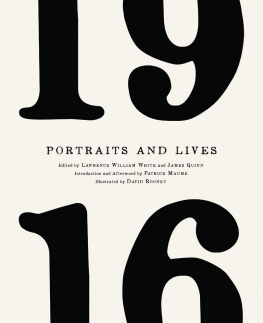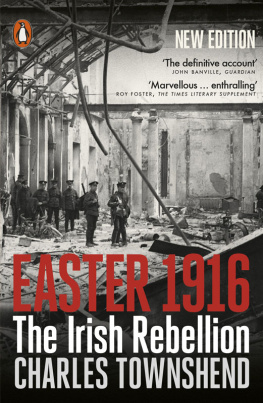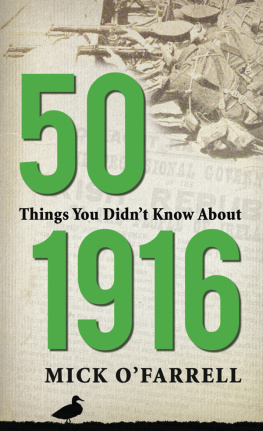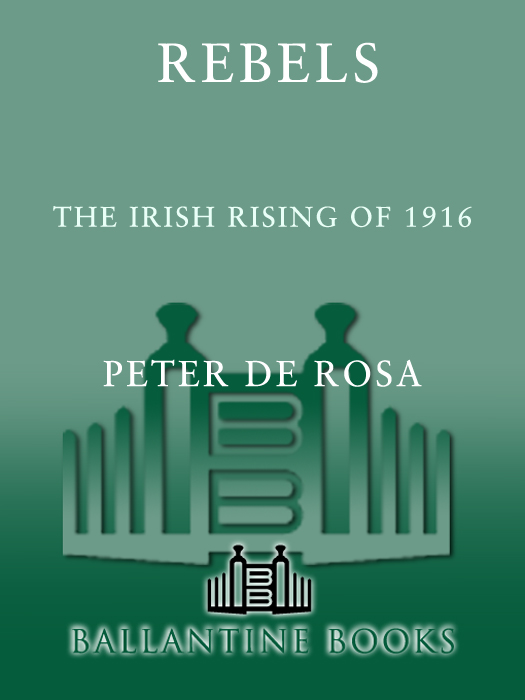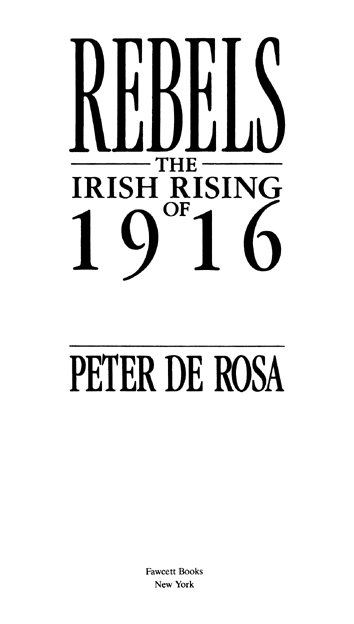A WORK OF GENIUS.
Michael Muller
Author of The Hungry Land
The author is light years ahead of that other mass-reducer of recent Irish history, Leon Uris, in the important matter of style The book ends powerfully with the executions. Some of the scenes are almost unbearably bleak and harrowing. Even the nameless Tommies come to life as little rays of humanity illuminate death-cell and execution yard.
The Sunday Press (Ireland)
I dont think I have ever read a more graphic or moving last chapter of a book than that of Rebels.
Irish Independent
Rebels is the saddest story Ive read since The Tale of Two Cities. Ive wept for Ireland a hundred times since reading [this] book.
Dr. Catherine OMahoney-OShea
Grand-niece of Michael Collins
Rousing De Rosa extracts every ounce of drama from a very large cast of historical figures, with rapidly cross-cutting scenes and truly crackling dialogue.
Library Journal
A chilling account De Rosa advances the bloody action in short, chronological episodes replete with Hemingwayesque dialogue, letters, and statements A dramatic and stirring contribution to Irish martyrology.
The Kirkus Reviews
A Fawcett Book
Published by The Random House Publishing Group
Copyright 1990 by Peter de Rosa
All rights reserved.
Published in the United States by Fawcett Books, an imprint of The Random House Publishing Group, a division of Random House, Inc., New York. Originally published in Great Britain by Bantam Press, a division of Transworld Publishers Ltd.
Fawcett is a registered trademark and the Fawcett colophon is a trademark of Random House, Inc.
www.ballantinebooks.com
This edition published by arrangement with Doubleday, a division of Bantam Doubleday Dell Publishing Group, Inc.
Library of Congress Catalog Card Number: 9172955
eISBN: 978-0-307-42294-1
v3.1_r1
NOTE TO THE READER
REBELS is not faction, still less is
it fiction. This is a true story, but so
extraordinary that it is only believable
because it happened.
With Talleyrand, I say, Je ne
blme, ni napprouve: je raconte,
I blame not, I approve not:
I merely tell a tale.
Why is the Rebellion so perennially fascinating? There is nothing to equal it as a drama, except the first months of the Spanish Civil War. The spectacle of the genial Birrell (the Chief Secretary) and Sir Matthew Nathan, the hard-working, dedicated Jewish civil servant, in their fools paradise, hamleted in Dublin Castle by their consciences and respect for legal procedure, pondering on their list of suspects, is pure theatre.
And then the tragic figures come on: Pearse, steeped in Celtic mythology, longing for martyrdom, dangerous as a one-man submarine; Connolly, the militant spokesman for international Marxism; Tom Clarke, the ex-prisoner; Plunkett, the dying strategist; the complicated Casement and his last ineffectual journey by submarine and rubber boat to the Tower there is scope here for one more masterpiece.
Cyril Connolly
A Terrible Shambles,
The Sunday Times,
24 April 1966
What in the worlds history was ever more romantic than the gesture of a few young men who challenged England when she had a million of men in arms, and died, and won by dying?
Stephen Gwynn
Dublin, Old and New
CONTENTS
LIST OF ILLUSTRATIONS
General Sir John Maxwell (Illustrated London News Picture Library)
Erskine Childers unloading arms from the Asgard at Howth (Topham Picture Library)
Sir Edward Carson addressing an anti-Home Rule rally in 1913 (Hulton-Deutsch)
Patrick Pearse after his oration at the funeral of ODonovan Rossa (National Library of Ireland)
John Redmond (Hulton-Deutsch)
Augustine Birrell (Sport and General)
Sir Matthew Nathan with Augustine Birrell (Arlington Books)
Lord Wimborne (Topham Picture Library)
Admiral Sir Reginald Hall (Topham Picture Library)
Sir Roger Casement (Topham Picture Library)
Casement aboard the German submarine U-19 (Arlington Books)
Eoin MacNeill (National Library of Ireland)
The Countess Markievicz with her daughter and stepson (National Museum of Ireland)
Sheehy-Skeffington with Captain White, a British soldier who trained the Irish Citizen Army (Weidenfeld Archive)
The ORahilly (Private Collection)
Patrick Pearse surrendering to General Lowe (Weidenfeld Archive)
The Countess Markievicz after her surrender (Topham Picture Library)
Eamon de Valera under prisoners escort (National Library of Ireland)
Father John OFlanagan (Arlington Books)
Willie and Patrick Pearse (National Library of Ireland)
Tom Clarke (National Library of Ireland)
Joseph Plunkett (National Library of Ireland)
Thomas MacDonagh (National Library of Ireland)
Edward Daly (Topham Picture Library)
John (Sean) MacBride (Topham Picture Library)
Eamonn Kent (Private Collection)
Cornelius Colbert (Private Collection)
Sean McDermott (National Library of Ireland)
James Connolly (Private Collection)
CHIEF CHARACTERS
(in alphabetical order)
ASQUITH, H. H., British Prime Minister.
BERNSTORFF, Count von, German Ambassador in Washington D.C.
BIRRELL, Augustine, Chief Secretary of Ireland.
BRUGHA, Cathal, second in command to Eamonn Kent.
CAPUCHIN FATHERS who attended the rebels in jail: Albert, Aloysius, Augustine, Columbus.
CARSON, Sir Edward, Dublin barrister and MP, leader of Loyalists in Ulster.
CASEMENT, Sir Roger, former British consular official.
CHILDERS, Erskine, yachtsman, supporter of Home Rule.
CHRISTENSEN, Adler, Norwegian sailor, friend to Casement.
CLARKE, Kattie, wife of Tom Clarke.
CLARKE, Tom, tobacconist, brains of the Irish Republican Brotherhood.
COLBERT, Cornelius, unit commander of Irish Volunteers.
CONNOLLY, James, Union boss, first in Belfast, then Dublin.
CRAIG, James, MP, chief organizer of Loyalists in Ulster.
DE VALERA, Eamon, maths teacher, Commandant of Irish Volunteers.
DALY, Edward (Ned), Commandant of Irish Volunteers.
DALY, John, Neds uncle and former prison companion of Tom Clarke.
DEVOY, John, Head of Clan na Gael, the Irish-American Revolutionary Organization, in New York.
DILLON, John, Irish Nationalist MP.
FRENCH, General Sir John, British GOC Home Forces.
FRIEND, General L. B., British GOC in Ireland.
GRIFFITH, Arthur, journalist and founder of Sinn Fein.
HALL, Captain (later Admiral) Reginald, Chief of Admiralty Intelligence.
HEUSTON, Sean, unit commander of Irish Volunteers.
HOBSON, Bulmer, Irish Republican Brotherhood, secretary of Irish Volunteers.
KENT, Eamonn, Commandant of Irish Volunteers.
LOWE, General W. N. C., British Army Commander in Dublin.
MacBRIDE, John (Sean), fought as Major in Irish Brigade against British in Boer War.
McDERMOTT, Sean, former barman, chief organizer of Irish Republican Brotherhood.


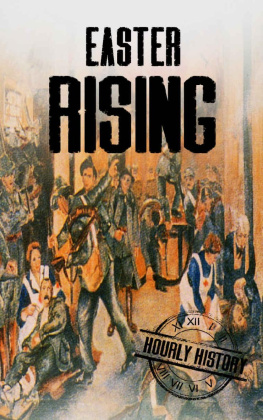

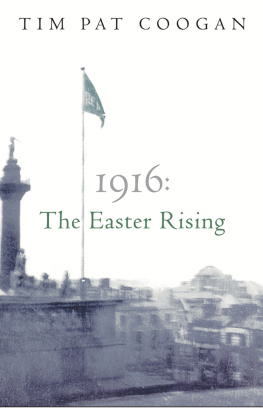
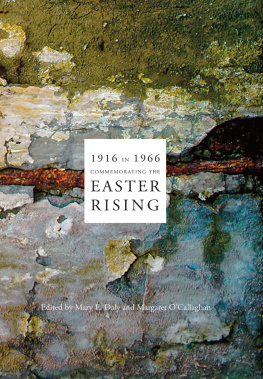
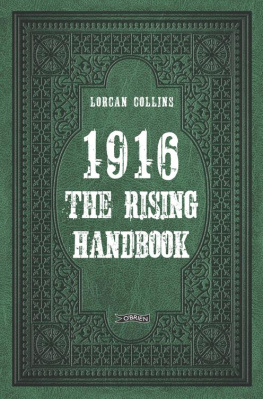
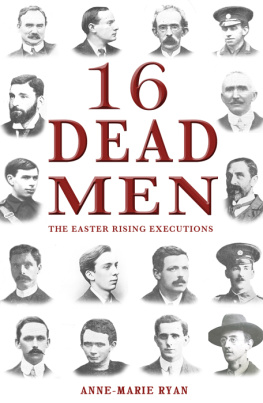
![Lorcan Collins [Lorcan Collins] - 1916: The Rising Handbook](/uploads/posts/book/143326/thumbs/lorcan-collins-lorcan-collins-1916-the-rising.jpg)
